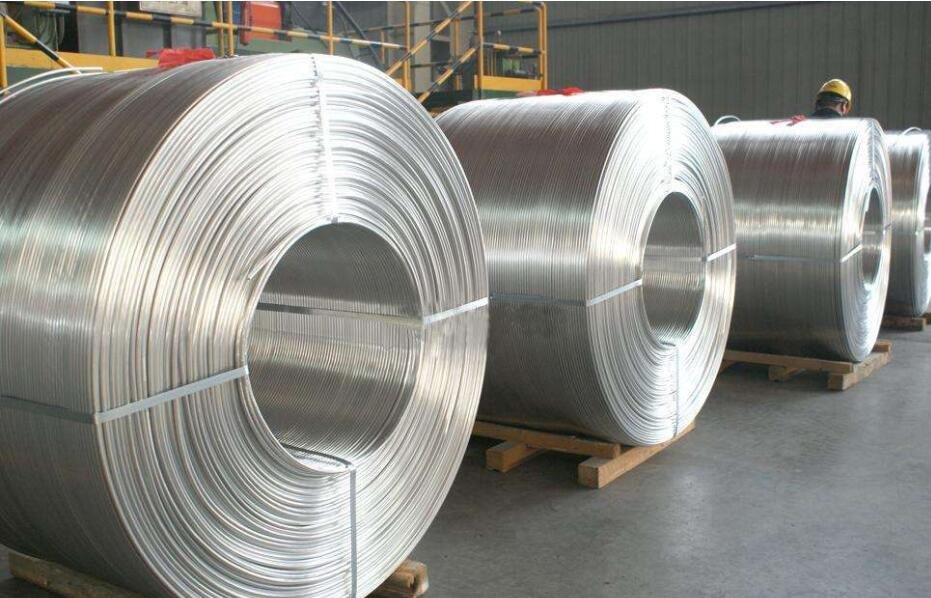Company News
5154 Rivet aluminum wire extrusion
Editor :frank
Time :2020-12-09 17:58
Aluminum rivets: In riveting, parts that use their own deformation or interference to connect the riveted parts.
A metal rod-shaped part with a cap at one end is inserted into the connected component, and the other end is punched and pressed out at the outer end of the rod to compress and fix the component.
There are many types of 5154 Rivet aluminum wire extrusion, and they are not formal. Common rivets are round head rivets, flat head rivets, countersunk rivets, semi-tubular rivets, solid rivets, composite rivets, step rivets and so on.
Round head rivets are mainly used for riveting occasions with larger lateral loads, and are the most widely used.

Flat cone-head rivets are corrosion resistant due to their fat heads. They are often used in riveting occasions with strong corrosion such as ship hulls and boiler water tanks.
Countersunk head and 1200 countersunk head rivets are mainly used for riveting occasions where the surface must be smooth and the load is not large.
Semi countersunk head and 1200 semi countersunk head rivets are mainly used for riveting occasions where the surface must be smooth and the load is not large.
Flat head rivets are used for riveting occasions with general loads.
Flat head and oval head rivets are mainly used for riveting occasions of metal sheets or non-metallic materials such as leather, canvas and wood.
Large flat head rivets are mainly used for riveting non-metallic materials.
Semi-hollow rivets are mainly used for riveting occasions with low load.
Headless rivets are mainly used for riveting non-metallic materials.
Sign rivets are mainly used for riveting nameplates on machines and equipment.
A metal rod-shaped part with a cap at one end is inserted into the connected component, and the other end is punched and pressed out at the outer end of the rod to compress and fix the component.
There are many types of 5154 Rivet aluminum wire extrusion, and they are not formal. Common rivets are round head rivets, flat head rivets, countersunk rivets, semi-tubular rivets, solid rivets, composite rivets, step rivets and so on.
Round head rivets are mainly used for riveting occasions with larger lateral loads, and are the most widely used.

Flat cone-head rivets are corrosion resistant due to their fat heads. They are often used in riveting occasions with strong corrosion such as ship hulls and boiler water tanks.
Countersunk head and 1200 countersunk head rivets are mainly used for riveting occasions where the surface must be smooth and the load is not large.
Semi countersunk head and 1200 semi countersunk head rivets are mainly used for riveting occasions where the surface must be smooth and the load is not large.
Flat head rivets are used for riveting occasions with general loads.
Flat head and oval head rivets are mainly used for riveting occasions of metal sheets or non-metallic materials such as leather, canvas and wood.
Large flat head rivets are mainly used for riveting non-metallic materials.
Semi-hollow rivets are mainly used for riveting occasions with low load.
Headless rivets are mainly used for riveting non-metallic materials.
Sign rivets are mainly used for riveting nameplates on machines and equipment.
Related :
- 180 Grade Self Bonding Enamelled aluminium Wire2013.12.19
- 1050 1350 Bunched Aluminium Wire2013.12.19
- Industrial Pure Cold Drawn Aluminium Wire Cable 1352013.12.19
- Deoxidized round aluminum rods2013.12.19
- The role and practical application of coiled alumin2013.12.19







